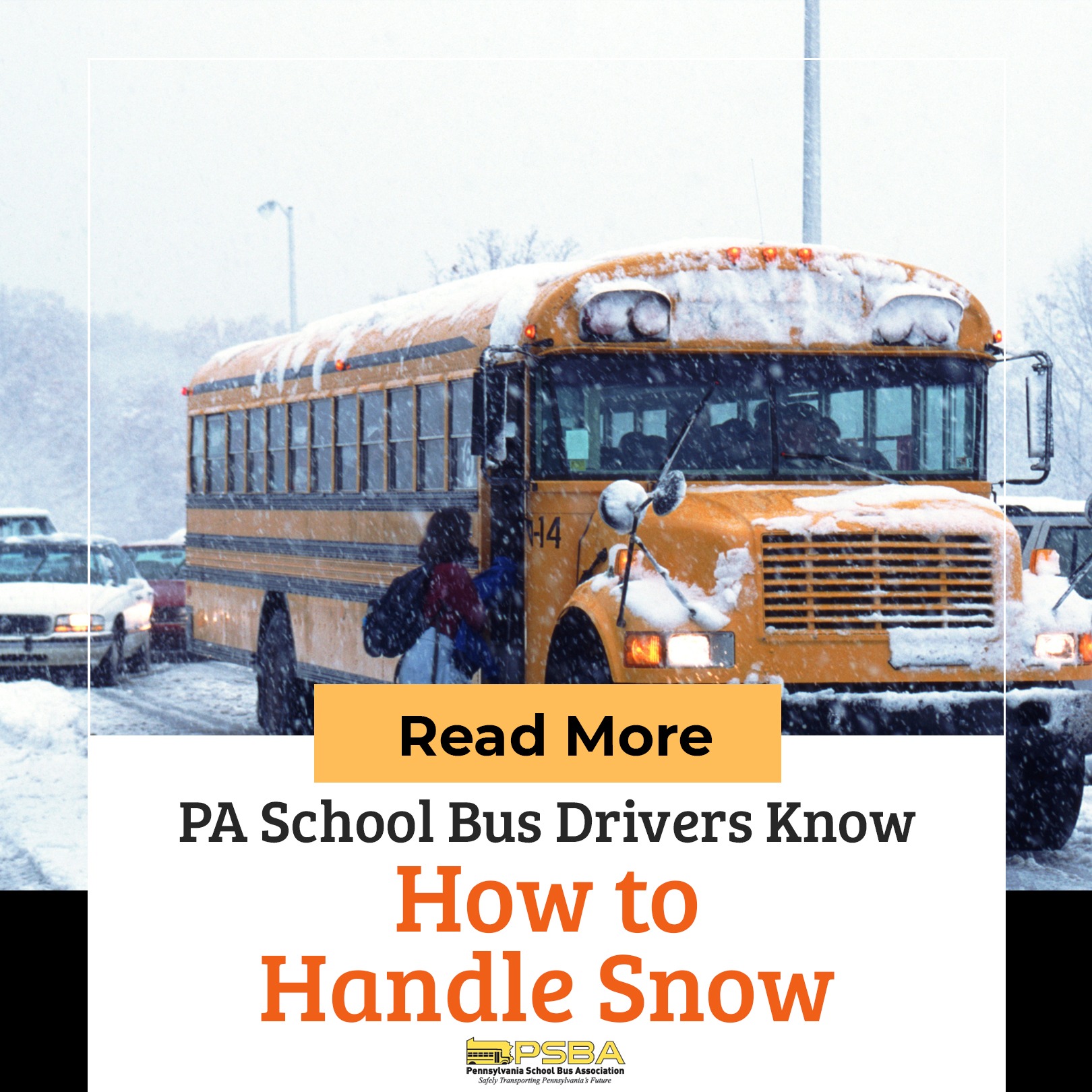PA school bus drivers are trained to handle various situations, even unexpected ones. The student’s safety is always the priority of the bus drivers, and the need to keep the students safe on board becomes even more urgent when adverse weather conditions hit the town, such as heavy snow.
The winter season poses some risky driving conditions. The streets can be harrowing to drive on as snow piles up quickly, the cold winds blow ferociously, and the freezing temperatures leave sheets of ice over everything.
And even though these roads have been plowed and salted, conditions can still be dangerous. Driving a school bus on snow or ice can be open to risks and requires a specific set of skills. School districts and school bus operators are responsible for providing information that will add to the knowledge that school bus drivers need when driving in winter conditions.
The moment temperatures begin to plummet and the snow starts to fall, school bus drivers should consider these tips to ensure safe driving through the winter:
Early planning
Figure out what procedures should be in place to ensure that students can safely get to and from school during winter. These procedures can include:
- Developing alternate routes or “winter routes.”
- Establishing earlier start times for drivers.
- Developing policies for late starts and cancellations.
- Creating policies and procedures for broken-down buses.
- Establishing communication protocols during severe winter conditions – such as using a phone or email system to alert when a bus gets delayed – for the school bus drivers, students and their parents or guardians, and school staff.
Preparing the bus for the winter drive:
- Ensure that all tires have enough tread or replace regular tires with winter snow tires.
- Install new windshield wipers.
- Test all batteries if they’re still working.
- Make sure that all lights are working.
- Apply a rain repellent on the exterior glass surfaces to prevent ice and snow from forming.
- Apply an anti-fog product on interior glass and side mirrors.
- Add a brake line antifreeze.
- Keep kitty litter or absorbent oil on board for emergency traction.
Doing pre-trip inspections:
- Remove ice and snow buildup from windows, mirrors, lights, and stop arms.
- Check the wiper blades.
- Check the washer fluid levels.
- Make sure that the fuel level should be as close to full as possible.
- Make sure that all tires are properly inflated.
- Check the road and weather conditions.
Training the drivers:
Ensure that all school bus drivers receive proper winter driving instructions and training.
- Slow down on wet, ice- or snow-covered roads.
- Watch for ice patches in particular areas – such as shaded areas, bridges, or overpasses where condensation usually freezes.
- Follow at a safe distance. Add following distances to five or six seconds instead of the usual four.
- Never slam on the brakes – it can lock the wheels and send you into a dangerous skid. Instead, accelerate and brake gently.
How to avoid a slip
Due to icy surfaces, you may likely slip and injure yourself while entering and exiting the bus. Keep the bus clear of ice and snow, particularly the steps, to prevent this from happening. Consider adding step-thread heaters on the buses or keep a spray bottle with brine on hand for spot treatment on slippery steps. Use three points of contact when going on and off the bus. Finally, don’t forget to wear shoes or boots with high-traction shoes.
Frigid temperatures and ice- or snow-covered roads present their driving challenges. They also test the limits of a school bus’s mechanical abilities and the PA school bus drivers’ abilities. Read our article The School Bus Is the Safest Way to Travel to and from School to learn more. If you think you are ready for such challenges as you are considering a new career, check out https://schoolbushero.com/jobs for school bus driver job opportunities in Pennsylvania!

